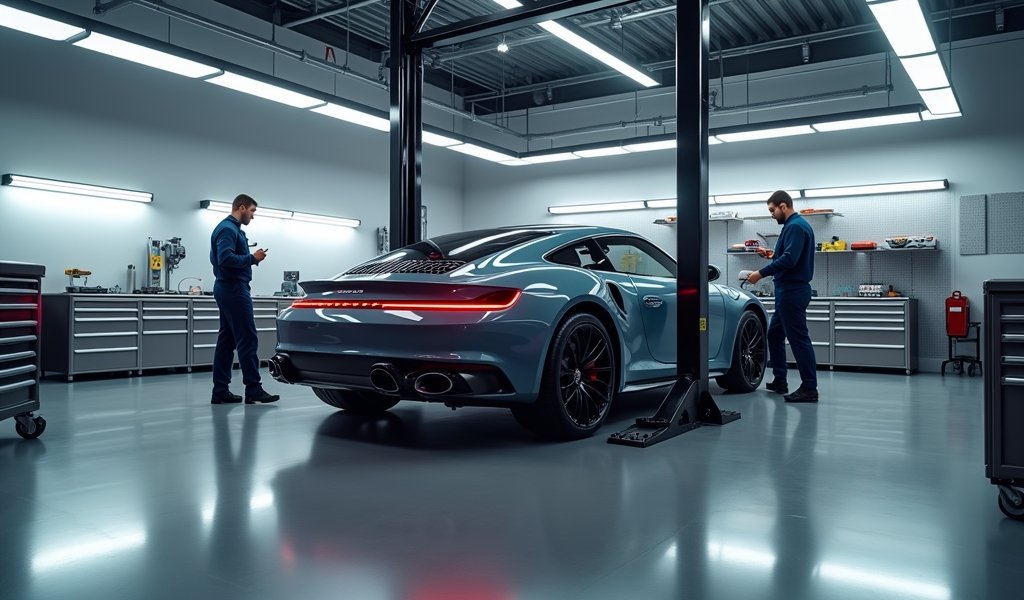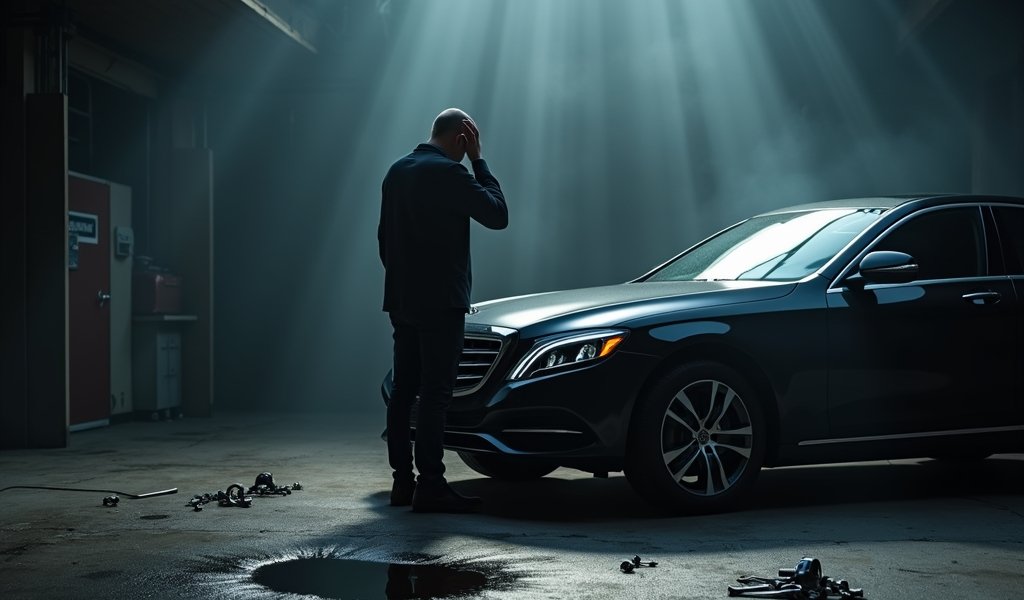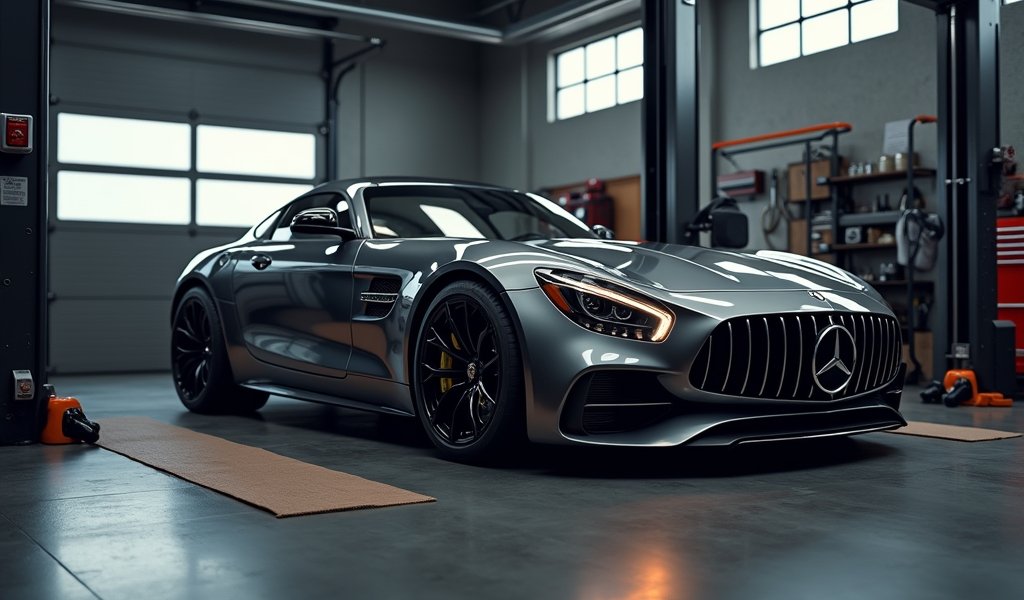Overview
This article outlines essential maintenance strategies for luxury vehicles, including regular servicing, proper fluid management, tire care, electronics upkeep, interior preservation, and knowing when to seek professional assistance. The author emphasizes that consistent, specialized care not only preserves a luxury vehicle’s value but also enhances the driving experience and extends the lifespan of these sophisticated machines.
Table of Contents
- Understanding Luxury Cars: More Than Just a Status Symbol
- Regular Maintenance: The Foundation of Luxury Car Care
- Fluid Checks and Changes: The Lifeblood of Your Luxury Vehicle
- Tire Maintenance and Rotation: Supporting Your Investment
- Electronics and Technology: Caring for Your Car’s Brain
- Interior Care: Preserving Luxury From Within
- Professional Maintenance: When to Call the Experts
- Conclusion
- Frequently Asked Questions
Understanding Luxury Cars: More Than Just a Status Symbol
Luxury car maintenance tips aren’t just about keeping up appearances—they’re essential for protecting what is likely one of your most significant investments. Having worked on everything from Bentleys to Maseratis for over two decades, I’ve seen firsthand how proper care can extend the life of these magnificent machines.
Luxury vehicles differ from standard cars in several crucial ways. They typically feature more complex engineering, higher-grade materials, and sophisticated technology systems that require specialized knowledge to maintain properly. The common “oil change every 5,000 miles” rule might apply, but that’s just scratching the surface of what these vehicles need.
What many new luxury car owners don’t realize is that the higher price tag comes with higher maintenance expectations. These aren’t just cars—they’re intricate systems of precision components working in harmony. Neglect even one aspect, and the entire performance experience can be compromised.
Let’s dive into seven professional-grade maintenance hacks that will help your luxury vehicle maintain its performance edge and retain its value for years to come. These tips come from the garage floor, not just the owner’s manual, and represent luxury car maintenance tips that have proven their worth time and again.
Regular Maintenance: The Foundation of Luxury Car Care
Consistency is the secret ingredient in luxury vehicle care. While it might be tempting to delay service when everything seems to be running smoothly, high-performance engines are particularly sensitive to maintenance intervals.
One trick I’ve learned over the years is to schedule your maintenance before you actually need it. For most luxury cars, I recommend scheduling oil changes at 4,000 miles instead of the suggested 5,000 miles. This simple adjustment provides a safety buffer and helps catch potential issues before they develop.
Another often-overlooked aspect is the importance of using factory-recommended or superior products. That special synthetic oil that costs twice as much as regular oil? It’s worth every penny for your high-performance engine. According to a study published by the Society of Automotive Engineers, premium lubricants can significantly reduce engine wear in high-performance vehicles.
Consider creating a digital maintenance log that goes beyond what the dealer records. Track everything from tire rotations to window washer fluid top-offs. This detailed history not only helps you stay on top of maintenance needs but becomes an invaluable selling point if you ever decide to part with your vehicle.
Remember that luxury car maintenance isn’t just about preventing breakdowns—it’s about preserving the driving experience that made you choose a luxury vehicle in the first place. That responsive acceleration, whisper-quiet cabin, and buttery-smooth ride all depend on meticulous, regular care.

Fluid Checks and Changes: The Lifeblood of Your Luxury Vehicle
Luxury cars don’t just have more sophisticated components—they often require more specialized fluids too. These aren’t areas where you want to cut corners or stretch intervals.
In my experience, one of the most overlooked maintenance items is transmission fluid. Many manufacturers claim their transmissions have “lifetime” fluid, but this is misleading. For optimal performance, I recommend changing transmission fluid every 30,000-40,000 miles in high-performance luxury vehicles.
Here’s a quick rundown of the essential fluids to monitor regularly:
- Engine oil (check monthly, change according to manufacturer specifications)
- Coolant/antifreeze (check quarterly, flush system every 2-3 years)
- Brake fluid (check twice yearly, replace every 2 years regardless of mileage)
- Power steering fluid (check quarterly)
- Transmission fluid (check twice yearly)
- Differential fluid (often forgotten but critical for AWD luxury vehicles)
The quality of these fluids matters tremendously. I’ve seen luxury vehicles develop issues prematurely simply because the owner opted for generic fluids rather than the manufacturer-specified products. The few dollars saved upfront can lead to thousands in repairs down the road.
A professional tip that has saved many of my clients headaches: keep a small notebook in your glove compartment to record the date and mileage whenever you check or top off fluids. This simple habit helps you spot potential leaks early by noting how quickly fluid levels drop.
And if you notice your luxury vehicle is particularly thirsty for a specific fluid, don’t just keep adding more—investigate the cause. Fluid consumption can be an early warning sign of mechanical issues that will only get worse (and more expensive) if ignored.
Tire Maintenance and Rotation: Supporting Your Investment
The connection between your luxury car and the road deserves special attention. High-performance tires aren’t just about grip—they’re integral to the handling characteristics that make driving your vehicle a pleasure.
Most luxury car owners understand the importance of using the right tires, but fewer appreciate the impact of proper inflation. Even small deviations from the manufacturer’s recommended pressures can affect ride quality, handling, and fuel efficiency. I recommend checking tire pressure every two weeks and always before long drives or when temperatures fluctuate significantly.
Rotation patterns matter more than you might think. Many luxury vehicles have staggered setups with different sized tires front and rear, which limits rotation options. In these cases, side-to-side rotation becomes crucial for even wear. For vehicles with the same size tires all around, I recommend the following rotation schedule:
- Every 5,000-7,000 miles for all-wheel drive vehicles
- Every 6,000-8,000 miles for rear-wheel drive vehicles
- Every 7,000-9,000 miles for front-wheel drive vehicles
Don’t forget about wheel alignment, which is particularly important for vehicles with performance-oriented suspension systems. Even minor misalignments can lead to premature tire wear and compromise handling. I recommend having your alignment checked annually or whenever you notice the vehicle pulling to one side.
One luxury car maintenance tip I give all my clients: invest in a set of dedicated winter wheels and tires if you live in an area with seasonal temperature changes. This not only provides better safety in cold weather but also preserves your premium summer or all-season tires from unnecessary wear during harsh conditions.
Tire pressure monitoring systems (TPMS) are standard on luxury vehicles, but don’t rely on them exclusively. These systems typically only alert you when pressure is significantly low. For optimal performance, use a quality gauge to check pressures manually when tires are cold.
Electronics and Technology: Caring for Your Car’s Brain
Modern luxury vehicles are essentially computers on wheels, with dozens of electronic control units managing everything from engine performance to seat position memory. This sophistication requires a different approach to maintenance.
Software updates are no longer optional—they’re essential maintenance items. Many luxury manufacturers now release updates that improve performance, fix bugs, and even add new features. Check with your dealer quarterly about available updates, or if your vehicle supports over-the-air updates, make sure these aren’t being delayed.
Battery health is particularly crucial in technology-heavy luxury cars. Even when your vehicle is turned off, multiple systems remain in standby mode, drawing small amounts of power. If you don’t drive your car frequently, consider using a high-quality trickle charger specifically designed for vehicles with sensitive electronics. This can prevent the frustration of a dead battery and potential electronic glitches that can occur during restart.
Be cautious about aftermarket electronic accessories. While it might be tempting to add that high-powered audio system or additional lighting, improper installation can interfere with your vehicle’s complex electronic architecture. Always use factory-approved accessories or consult with specialists who understand the particular requirements of your luxury brand.
One often overlooked aspect of electronic maintenance is keeping connections clean. Corrosion on battery terminals can cause mysterious electronic glitches that might seem unrelated to power supply. Twice yearly, disconnect and clean your battery connections using a proper terminal cleaning tool and protectant spray.
Remember that extreme temperatures can affect electronic components, so if possible, park your luxury vehicle in climate-controlled environments, especially during weather extremes. This not only protects electronics but also preserves interior materials and finishes.

Interior Care: Preserving Luxury From Within
The interior of your luxury car represents a significant portion of its value and is often where manufacturers showcase their finest materials and craftsmanship. Proper care here is about preservation, not just cleanliness.
Leather requires special attention in luxury vehicles. Unlike furniture leather, automotive leather is typically treated differently and faces unique challenges from UV exposure and body oils. I recommend using pH-balanced leather cleaners specifically formulated for automotive use, followed by a quality conditioner every 2-3 months. This regimen helps prevent the dreaded cracking and fading that can make even low-mileage vehicles look tired.
Climate control makes a tremendous difference in interior longevity. Whenever possible, use your garage for parking and consider window tinting (within legal limits) to reduce UV damage. If your luxury vehicle offers a “max” climate control setting, use it briefly before entering during extreme weather to normalize temperatures quickly.
Wood trim and piano black surfaces look stunning when new but can quickly show scratches and fingerprints. Instead of reaching for household products, invest in specialized cleaners designed for these delicate surfaces. Microfiber cloths are your best friends here—keep several clean ones in your vehicle for quick touch-ups.
The carpet and floor mats in luxury vehicles often feature higher pile and more delicate materials than mainstream cars. Vacuum weekly if possible, and address spills immediately with appropriate cleaners. Consider investing in custom-fit all-weather floor mats for daily driving, reserving the original mats for special occasions to keep them pristine.
For a comprehensive approach to interior care, consider scheduling a professional interior detailing session annually. Professional detailers have the tools and products to reach areas you might miss and can apply protective treatments that extend the life of your interior materials.
Professional Maintenance: When to Call the Experts
While there’s much you can do yourself to maintain your luxury vehicle, certain aspects require professional expertise. Knowing when to call in the professionals is itself a valuable skill.
Factory-trained technicians bring specialized knowledge that general mechanics may lack. For complex systems like adaptive suspensions, advanced driver assistance features, or brand-specific powertrains, the investment in dealership service can prevent costly mistakes. According to J.D. Power research, luxury vehicle owners who stick with dealership service generally report higher satisfaction with their vehicles over time.
However, independent specialists who focus exclusively on your brand can often provide comparable expertise at lower costs. These shops typically employ former dealership technicians and invest in the same diagnostic equipment used at official service centers.
The key is to develop a relationship with your service provider. Whether dealership or independent, finding a technician who knows your specific vehicle’s history and quirks is invaluable. They’ll notice patterns and can anticipate needs before they become problems.
For the best of both worlds, consider using the dealership for complex electronic and powertrain work while finding a trusted independent shop for routine maintenance like brake service, suspension work, and general repairs.
When selecting a service provider, look beyond price. Ask about their experience with your specific model, what diagnostic equipment they use, and their approach to preventative maintenance. A good shop will be happy to explain their recommendations and show you worn parts they’ve replaced.
Remember that professional detailing is also a form of maintenance. A proper detail does more than make your car look good—it preserves surfaces, prevents material degradation, and can identify emerging issues like leaks or unusual wear patterns.
Conclusion
Luxury car maintenance isn’t just about preserving value—it’s about enhancing your ownership experience. When properly maintained, a high-end vehicle can provide years of driving pleasure while retaining more of its original character and performance.
The seven maintenance tips we’ve explored—understanding your vehicle’s unique needs, adhering to regular maintenance schedules, monitoring fluids meticulously, maintaining tires properly, caring for electronics, preserving interior materials, and knowing when to seek professional help—form a comprehensive approach to luxury car care.
Remember that consistency matters more than intensity. Small, regular attention prevents the need for major interventions later. Treat maintenance as an ongoing relationship with your vehicle rather than occasional emergency response.
Ultimately, luxury car maintenance tips are about respect—respect for the engineering, craftsmanship, and design that went into creating your vehicle. By giving your luxury car the care it deserves, you honor that work while ensuring that each drive delivers the experience you invested in.
Your luxury vehicle is more than transportation—it’s a precisely engineered system designed to deliver a superior driving experience. With proper maintenance, that experience doesn’t have to diminish with time. Instead, you’ll develop an even deeper appreciation for your vehicle as you maintain its capabilities year after year.
Frequently Asked Questions
How often should I change the oil in my luxury car?
Follow manufacturer recommendations, but generally every 5,000-7,500 miles for synthetic oil. Consider reducing this interval by 1,000 miles if you frequently drive in stop-and-go traffic or extreme conditions.
Are dealer services worth the premium price for luxury cars?
For complex electronic systems and major services, dealer expertise often justifies the cost. Routine maintenance can often be performed by specialized independent shops with comparable quality at lower prices.
Can I use regular fuel in my luxury vehicle if premium is recommended?
Always use the recommended fuel grade for your specific model. Using lower octane fuel in engines designed for premium can reduce performance and potentially cause engine damage over time.
How often should I detail my luxury car?
A thorough exterior wash every 2-3 weeks, interior cleaning monthly, and professional detailing twice yearly is ideal. Adjust frequency based on your climate, driving conditions, and how often you use your vehicle.
What’s the most common maintenance mistake luxury car owners make?
Stretching maintenance intervals beyond manufacturer recommendations to save money. The short-term savings almost always lead to more expensive repairs and accelerated depreciation in the long run.

